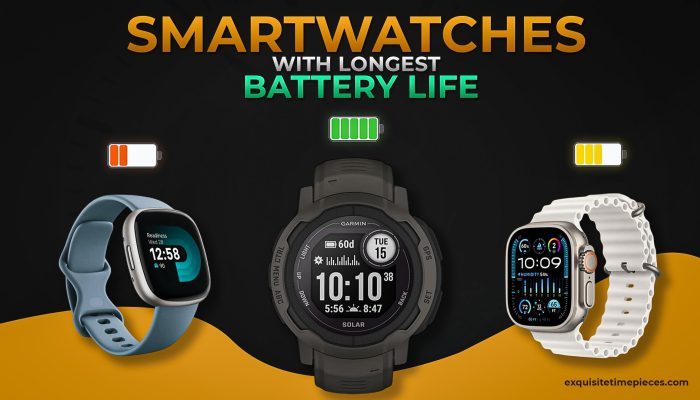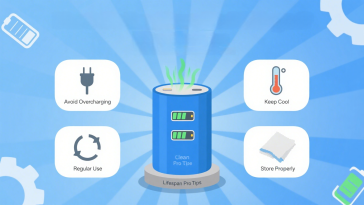Smartwatches are indispensable in today’s connected lifestyle, but their usability heavily depends on battery endurance and efficient charging methods. This blog explores factors influencing smartwatch battery life, the types of batteries used, technologies to enhance longevity, and the pros and cons of charging options like wired and wireless charging.
Factors Affecting Smartwatch Battery Life
Battery life depends on many usage and hardware factors:
- Screen Always-On Time: Displays consume a significant part of the battery. AMOLED and LCD screens with high brightness or always-on modes use more power. Watches with memory-in-pixel (MIP) displays consume less energy and offer longer battery life.1
- Sensors and Monitoring Frequency: Continuous heart rate, GPS, SpO2, and other health sensors draw power continuously. Reducing the frequency of measurements can save battery.2
- Bluetooth and Cellular Connectivity: Keep-alive connections, especially LTE or cellular functions, use more energy than paired Bluetooth modes. Frequent notifications and syncing also drain power.
- Operating System and Usage Patterns: More feature-rich OS and apps increase power consumption. Multisport and navigation modes that heavily use GNSS/GPS consume more battery.
- Environmental Conditions: Extreme temperatures can affect battery performance, especially cold weather.1
Battery Types in Smartwatches
The majority of smartwatches use lithium-based rechargeable batteries:
- Lithium-Ion (Li-Ion): Offers high energy density, long cycle life, and low self-discharge. It is reliable and commonly used in smartwatches.3
- Lithium-Polymer (Li-Po): Provides flexibility in shape, making slim and ergonomic designs possible. It is lightweight and safe, increasingly popular in fitness and smartwatches.4
Both battery types support rechargeable operation with good energy retention, making them suitable for wearable devices.
Technologies to Extend Battery Life
Manufacturers use several strategies to optimize energy efficiency:
- Low-Power Chipsets: Advanced processors and dedicated low-power ICs reduce energy consumption, especially during sensor data processing and communication.
- Power Management Systems: Optimized operating systems manage sensor sampling rates, screen brightness, and background tasks to limit unnecessary power use.
- Display Optimization: Adaptive brightness and disabling always-on display significantly extend battery life.5
- Communication Protocol Efficiency: Using Bluetooth Low Energy (BLE) helps reduce the power used for data transfers.
Wired and Wireless Charging Technologies
Wired Charging
- Uses USB or proprietary connectors.
- Pros: Faster charging times, more energy-efficient, widely compatible.
- Cons: Wear and tear on ports and cables, less convenient for water resistance.
Wireless Charging
- Employs Qi or similar inductive charging standards.
- Pros: No exposed ports, improved waterproofing, convenient placement.
- Cons: Slower charging speeds, more heat generation possibly reducing battery lifespan if unmanaged.6
- Requires specific positioning between charger and device.
Conclusion
Smartwatch battery life is influenced by display types, sensor activity, connectivity status, and environmental factors. Lithium-ion and lithium-polymer batteries dominate due to their high energy density and flexible design. Cutting-edge low-power chipsets and power management systems are key to extending usage times. Wired charging remains the faster and more reliable choice, while wireless charging offers convenience and better device durability. Users should balance features and charging preferences to optimize smartwatch battery performance.
- https://www.triathlete.com/gear/tech-wearables/how-to-get-the-most-from-your-triathlon-smartwatch-battery/
- https://pmc.ncbi.nlm.nih.gov/articles/PMC7374306/
- https://vositone.com/resources/comparing-smart-watch-battery-life-between-models.html
- https://motoma.com/lip-applications/motoma-lithium-polymer-battery-in-smart-wristband-fitness-tracker.html
- https://ryzeabove.com.au/blogs/news/smartwatch-battery-life-tips-to-extend-your-wearable-s-performance
- https://www.anker.com/blogs/wireless-chargers/wireless-charging-vs-wired




 No products in the cart.
No products in the cart.